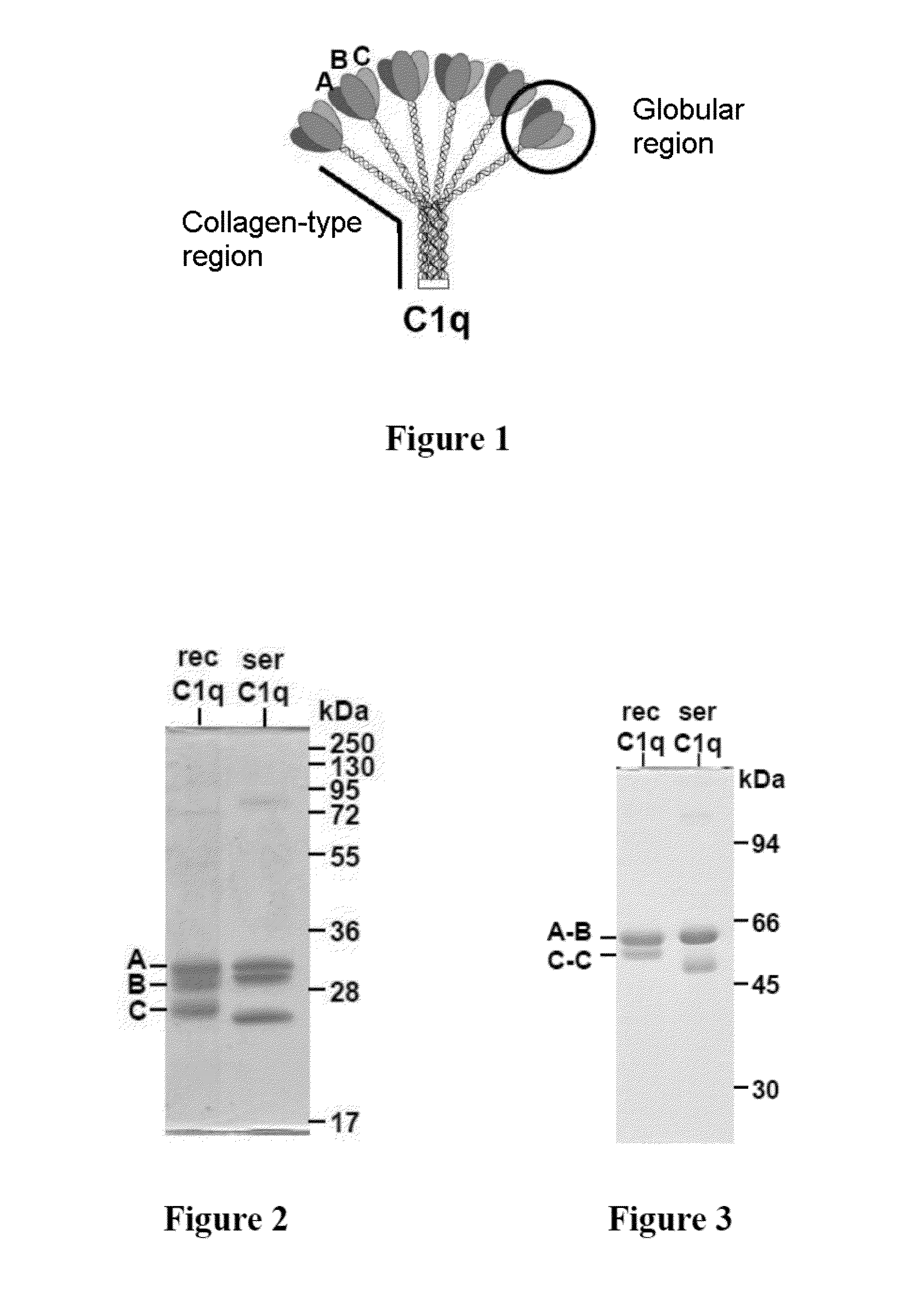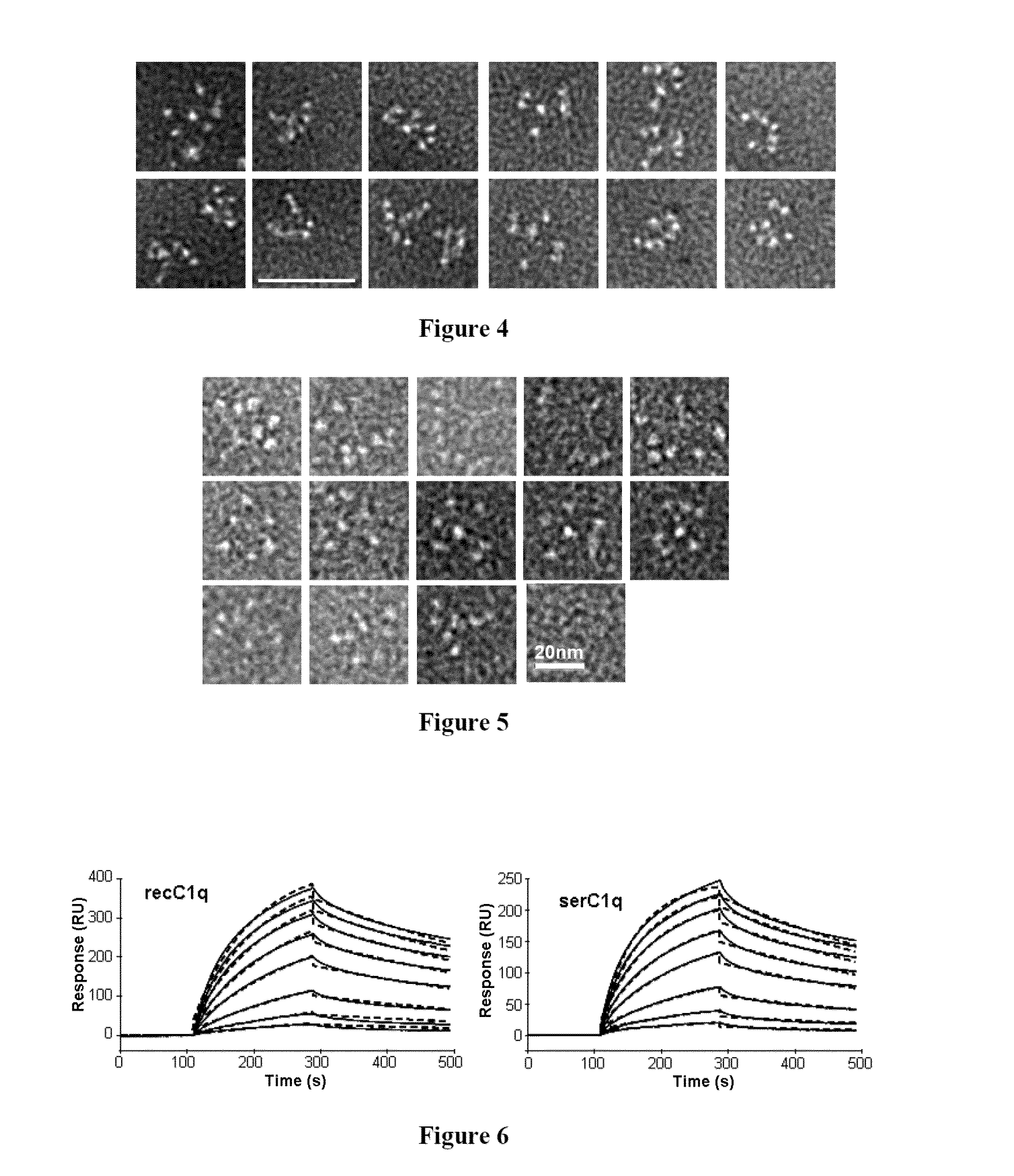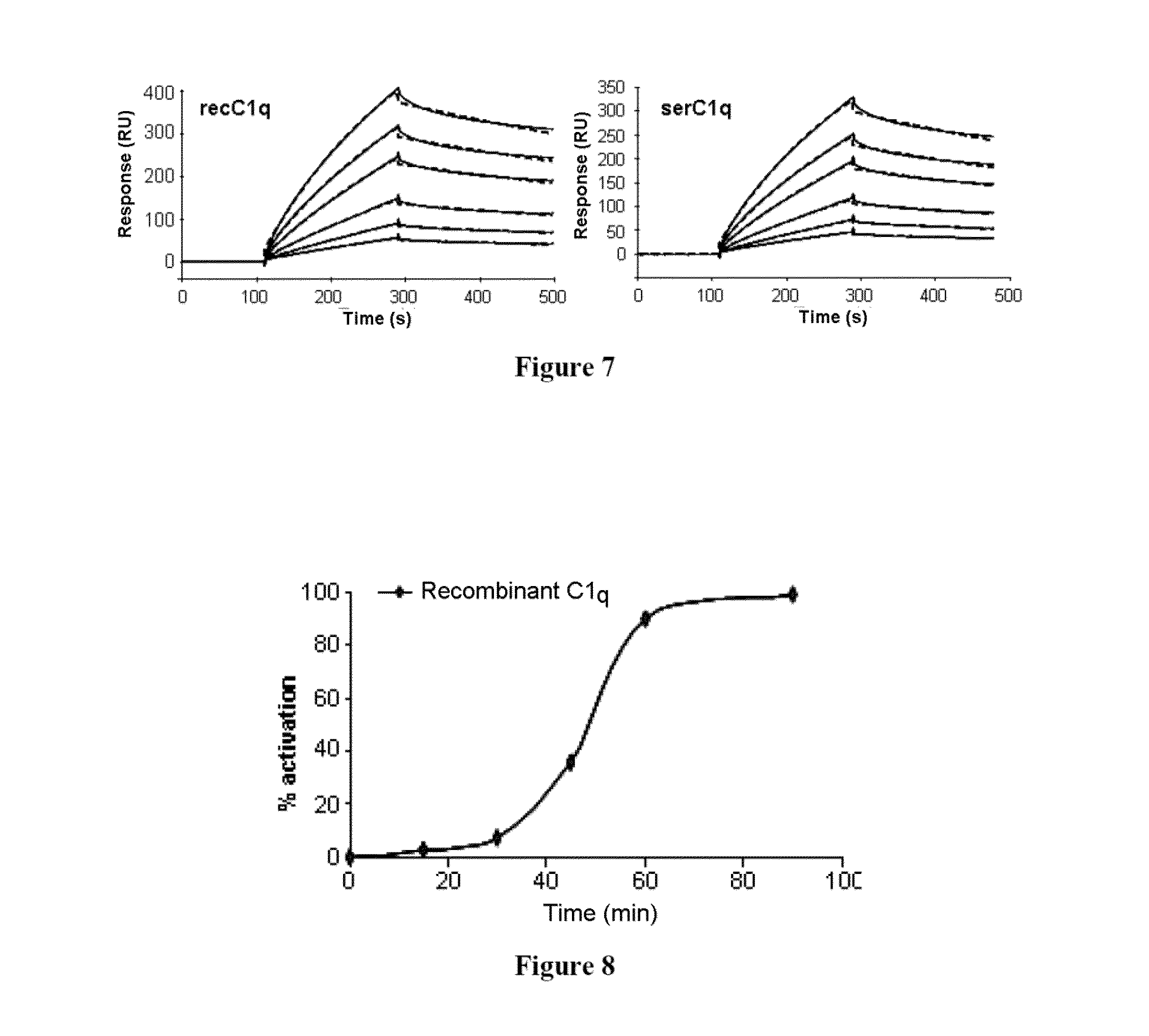Method for preparing c1q recombinant protein
a recombinant protein and c1q technology, applied in the field of preparing c1q recombinant protein, can solve the problem of complex production of c1q by synthesis
- Summary
- Abstract
- Description
- Claims
- Application Information
AI Technical Summary
Benefits of technology
Problems solved by technology
Method used
Image
Examples
example 1
[0053]1. Cloning of Recombinant C1q
[0054]a) Inserts Preparation
[0055]Clones harboring the sequences encoding the C1qA, C1qB and C1qC subunits, respectively defined by the GenBank database identifiers NM 015991, NM 000491 and NM 172369, were obtained from Origene (Rockville, Md., USA) (see Table 1).
TABLE 1ORIGENE clones C1qA-pcMV6-Ac (NM 015991)C1qB-pc MV6-XL4 (NM 000491)C1qC-pc MV6-XL4 (NM 172369)
[0056]The C1qA, C1qB and C1qC clones were amplified by transformation with 5 ng of DNA in Escherichia coli DH5a bacteria (Invitrogen) and then purified using the QIAPrep Miniprep kit from Qiagen.
[0057]The coding sequences of the C1qA, C1qB and C1qC subunits were then amplified using the primer oligonucleotides presented in Table 2 using the following protocol:
[0058]Reaction mixture:[0059]Template (clone): 200 ng[0060]MgSO4: 2 mM[0061]dNTPs: 400 μM[0062]Primers: 100 pmol[0063]Vent polymerase (New England Biolabs): 2 U
[0064]PCR cycles:
1.95° C.2 min2. 95° C.1 min3. 60° C.1 min4.72° C.1 minCycl...
example 2
[0171]1. Cloning of Two Other C1qC Chains Modified by Addition of an Additional Amino Acid Sequence
[0172]N-terminal Insertion of the DYKDDDDK Sequence (SEQ ID No. 8)
[0173]The DYKDDDDK sequence (SEQ ID No. 8) was inserted at the N-terminal end of the C1qC subunit by site-directed mutagenesis using the Quickchange kit (Agilent) so as to form the peptide+C1qC subunit.
[0174]Briefly, an amplification of the pcDNA3.1.C1qC plasmid is carried out by PCR using two complementary primers which incorporate the additional amino acid sequence to be inserted and which bind respectively to the two strands of the plasmid. For this, a reaction mixture comprising 200 ng of the pcDNA3.1.C1qC plasmid and 225 ng of an oligonucleotide having the sequence
CCCCTCAGGGGCCAAGCCGATTACAAGGATGACGACGATAAGAACACAGGCTGC TACGGG (SEQ ID No. 18) and of an oligonucleotide having the sequence CCCGTAGCAGCCTGTGTTCTTATCGTCGTCATCCTTGTAATCGGCTTGGCCCCTGA GGGG (SEQ ID No. 19) is prepared (the underlined parts correspond to the se...
PUM
| Property | Measurement | Unit |
|---|---|---|
| concentration | aaaaa | aaaaa |
| concentration | aaaaa | aaaaa |
| concentration | aaaaa | aaaaa |
Abstract
Description
Claims
Application Information
 Login to View More
Login to View More - R&D
- Intellectual Property
- Life Sciences
- Materials
- Tech Scout
- Unparalleled Data Quality
- Higher Quality Content
- 60% Fewer Hallucinations
Browse by: Latest US Patents, China's latest patents, Technical Efficacy Thesaurus, Application Domain, Technology Topic, Popular Technical Reports.
© 2025 PatSnap. All rights reserved.Legal|Privacy policy|Modern Slavery Act Transparency Statement|Sitemap|About US| Contact US: help@patsnap.com



